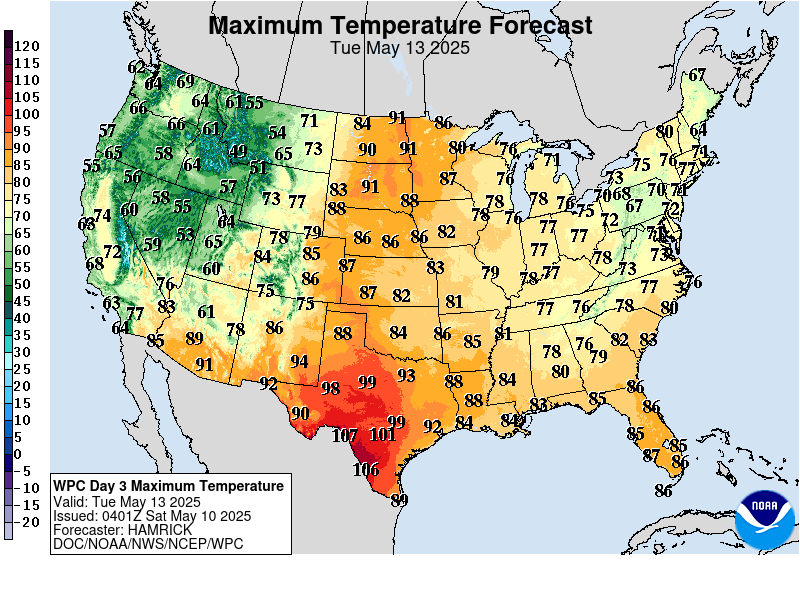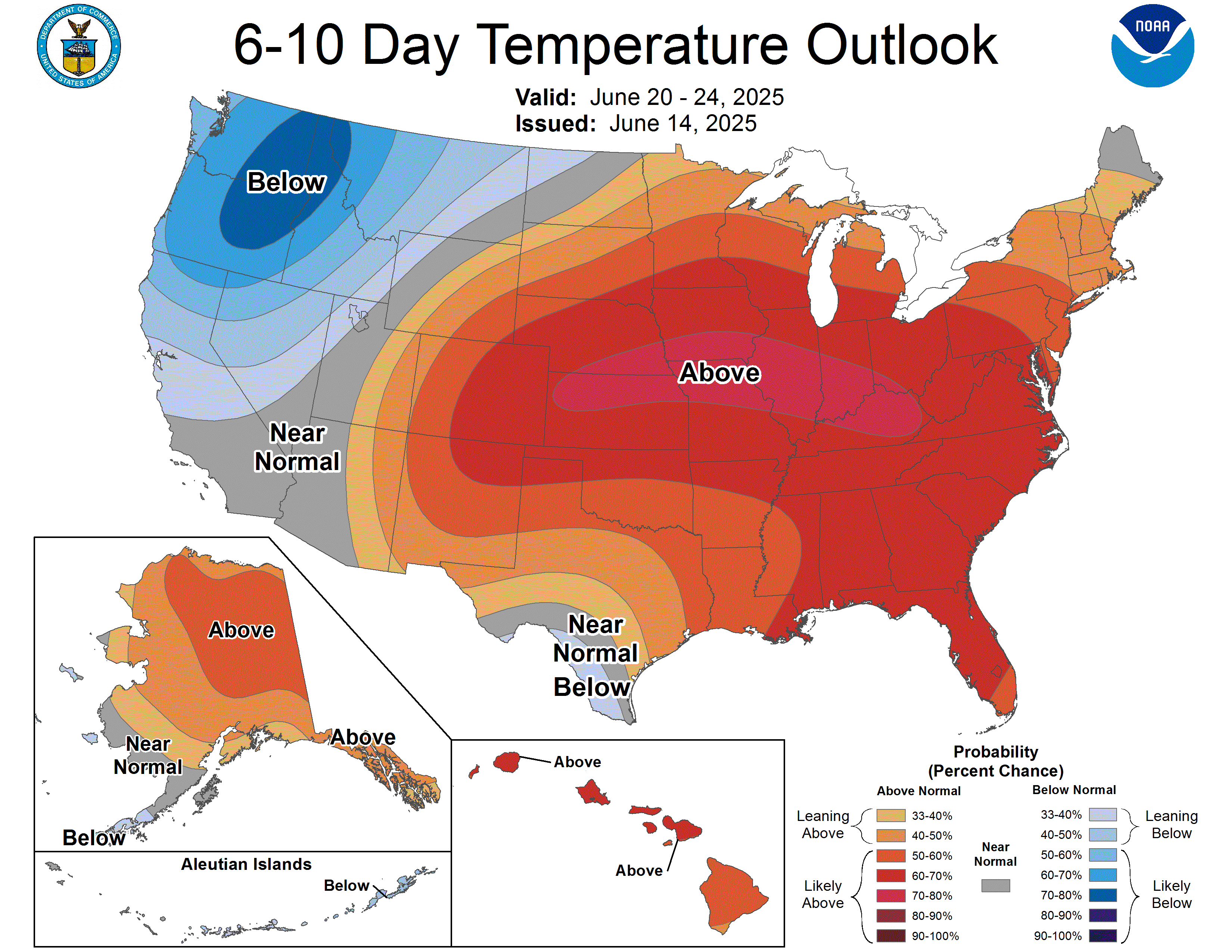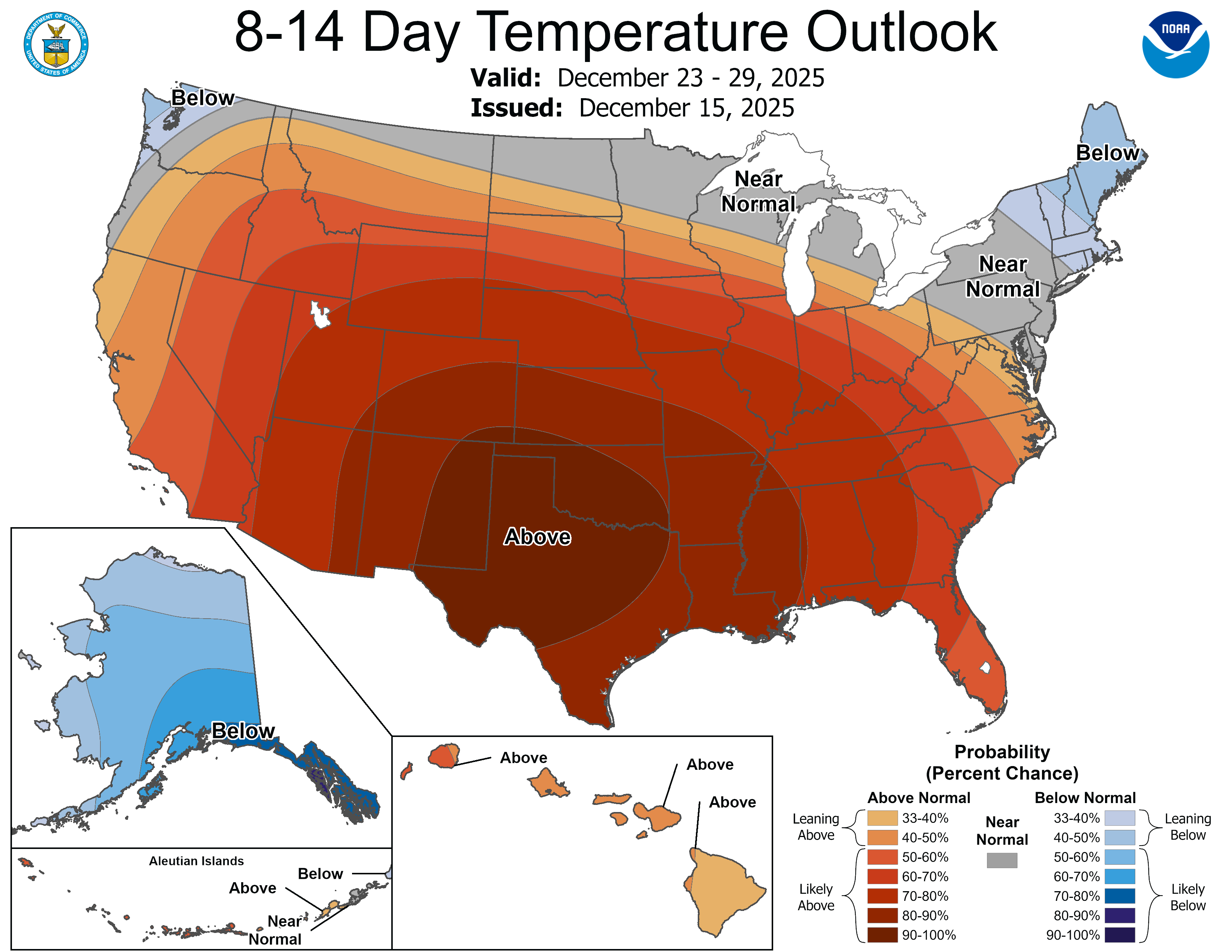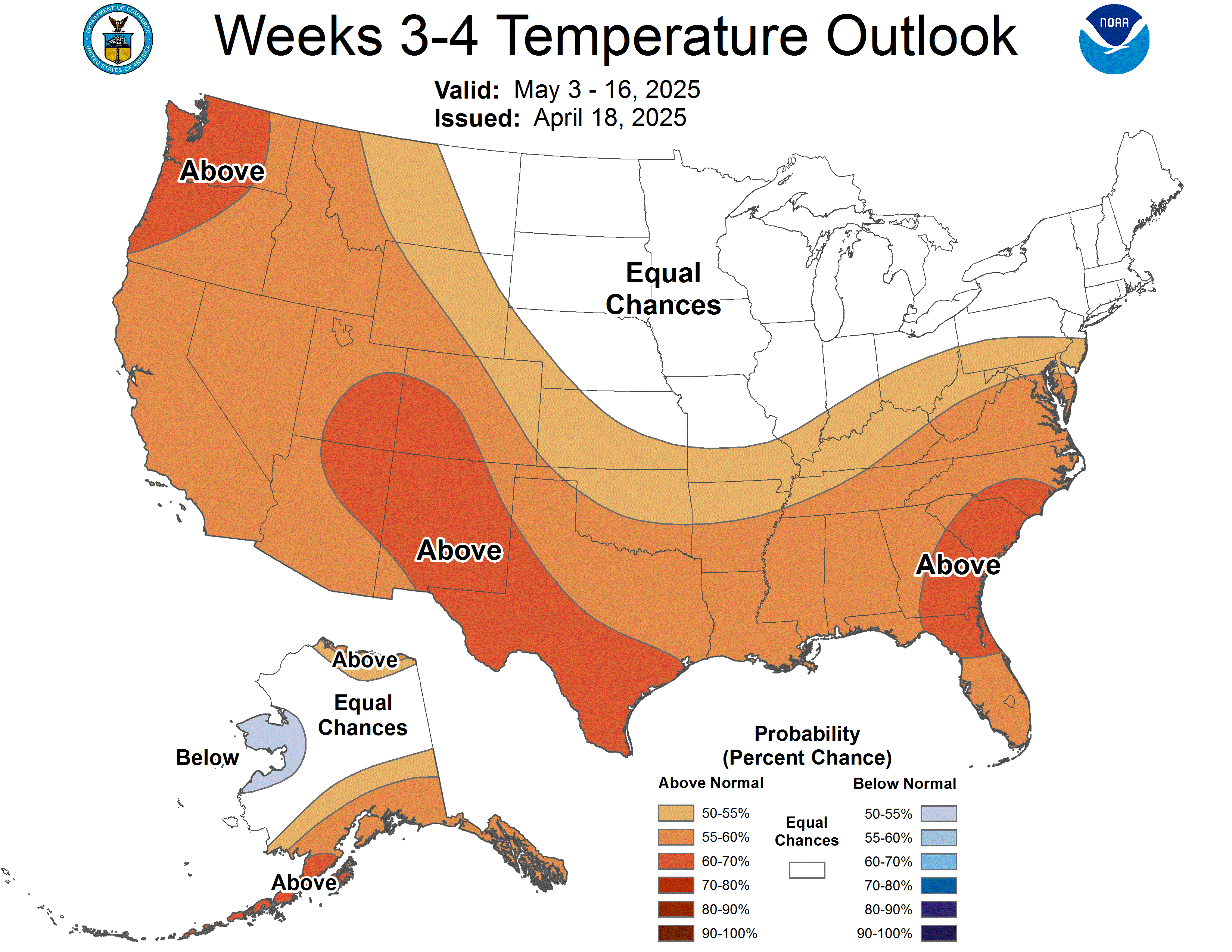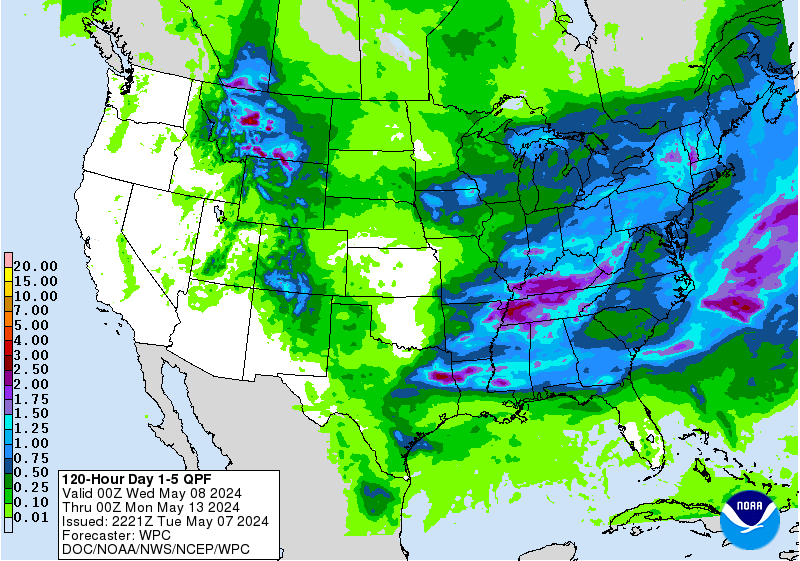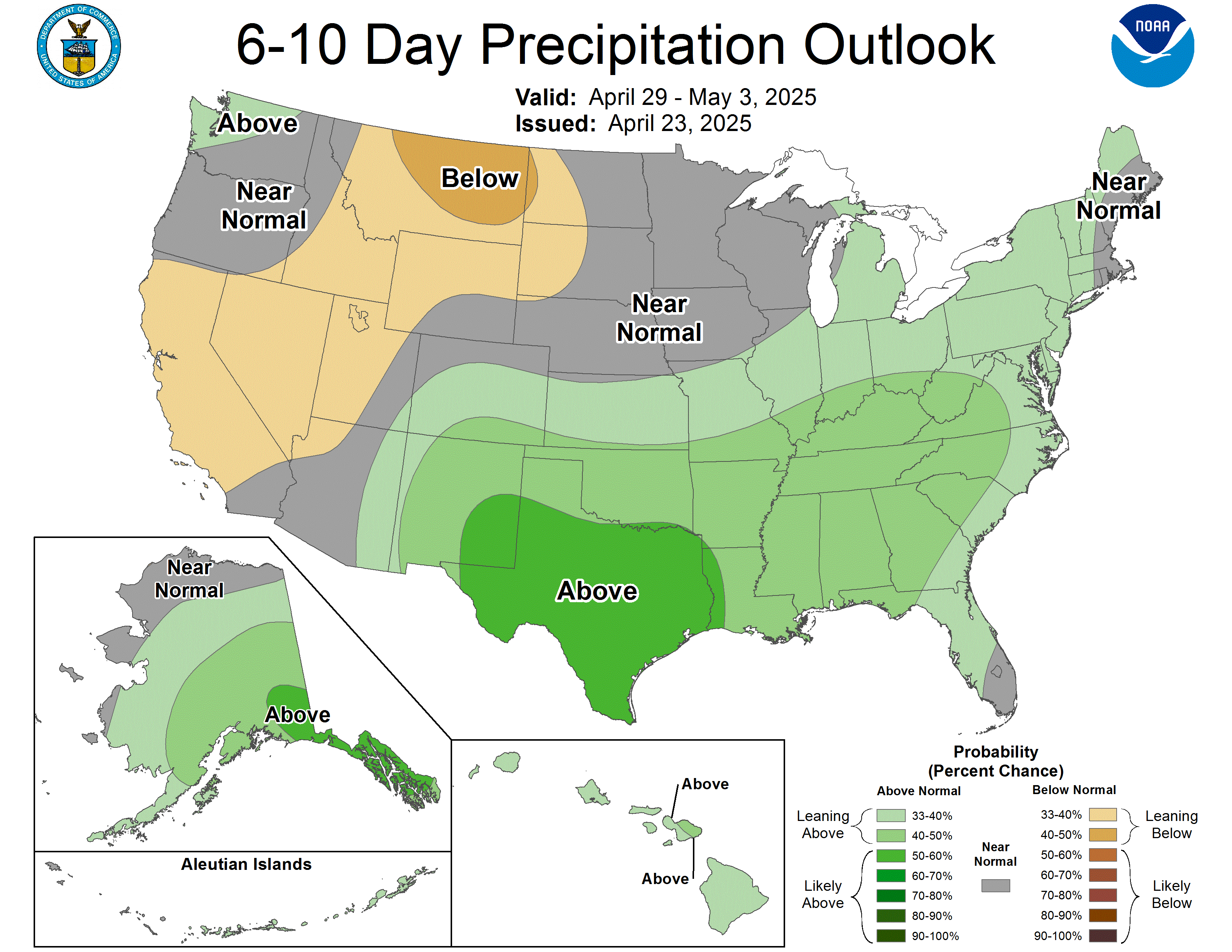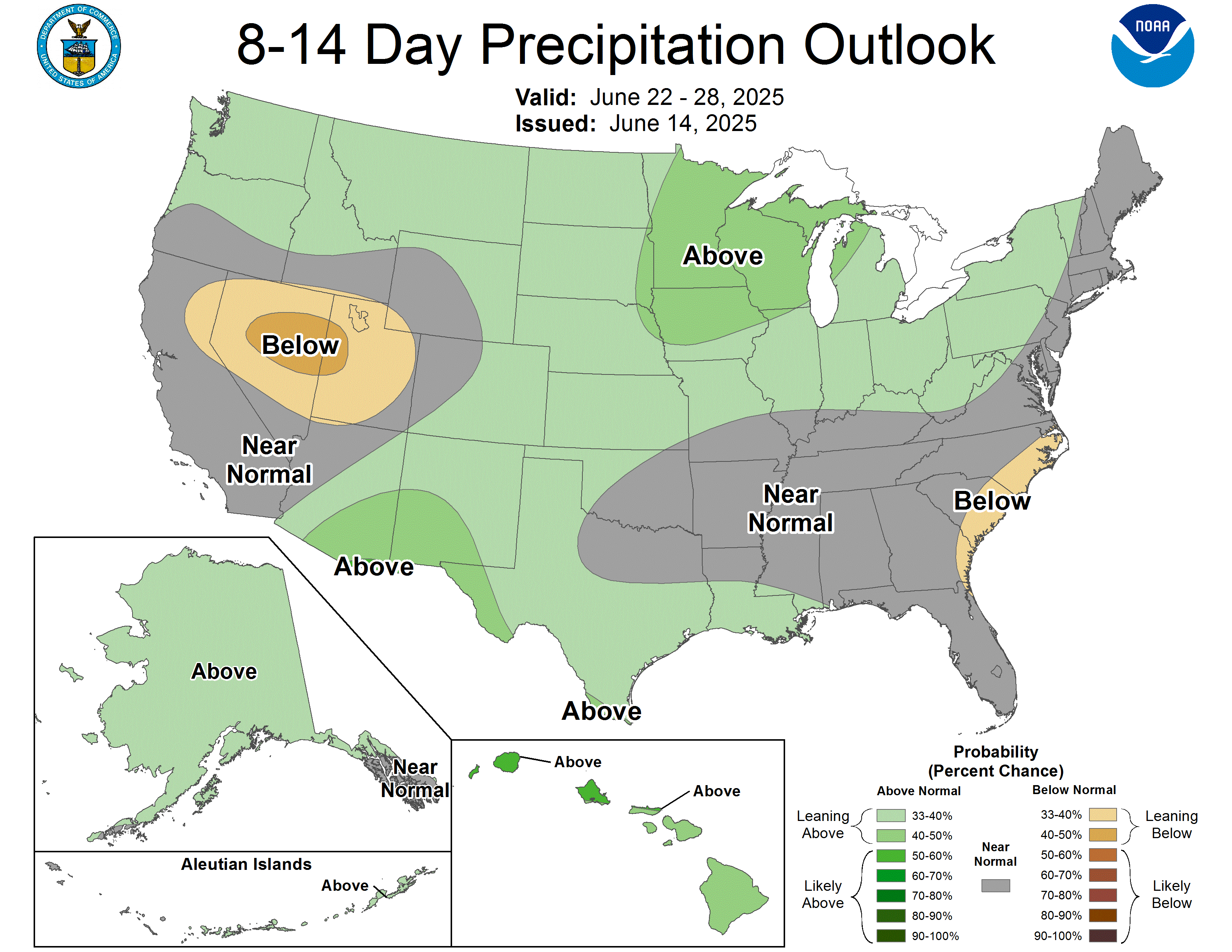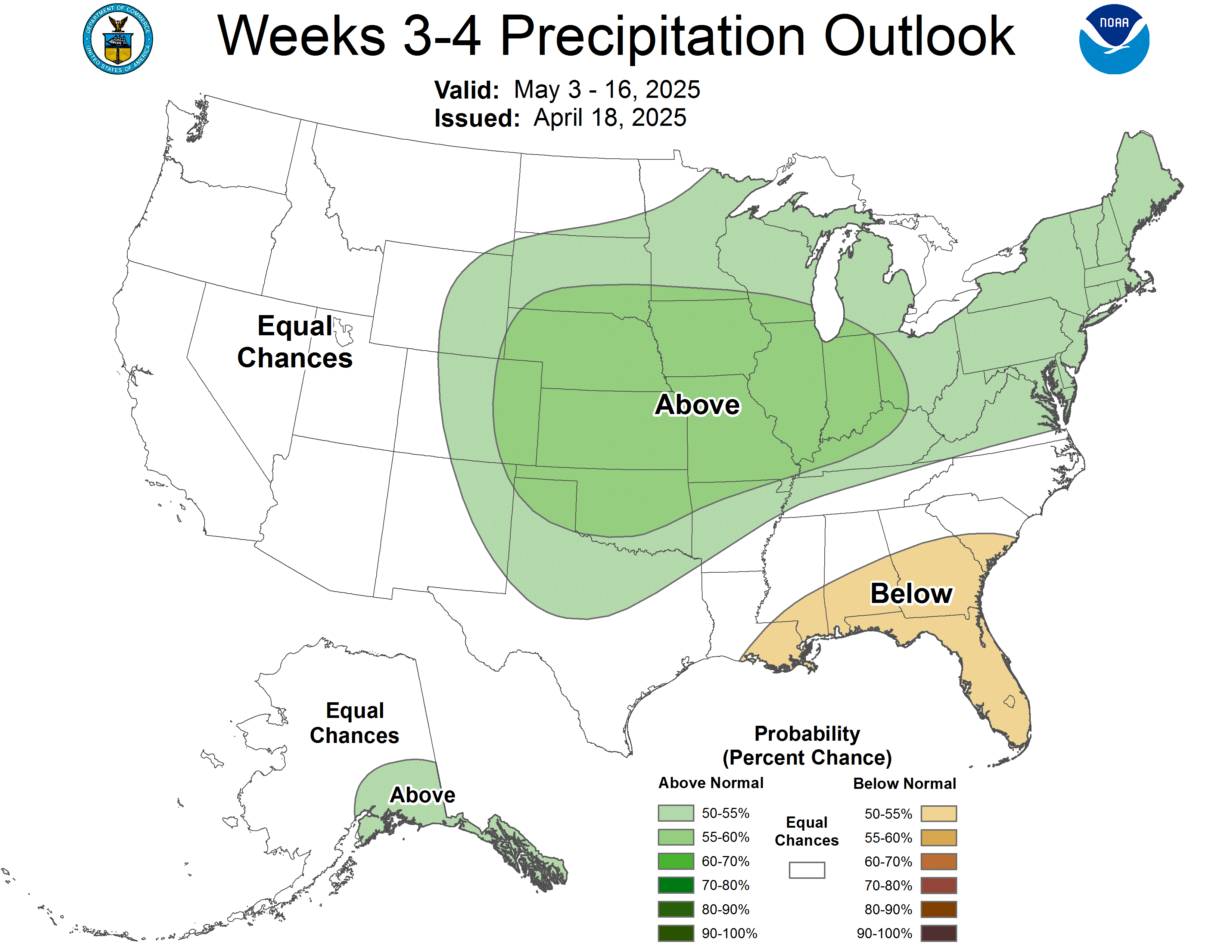Written by Sig Silber
At the end of every month, NOAA issues an update of their Early Outlook for the following month – in this case August. The Early Outlook as usual, together with their Four-Season forecast, was issued on the Third Thursday of the month. Now, sixteen days later, there have been some significant changes. The August Drought Forecast was also issued today and is quite interesting.

Some housekeeping: On July 15, 2021, we published Part I of our analysis of the NOAA Four – Season Outlook and that can be accessed here. In that report, the August 2021 Early Outlook was issued. This article presents the NOAA update of their Early temperature and precipitation Outlooks for August and the Drought Forecast for the month of August.
Please share this article – Go to the very top of the page, right-hand side for social media buttons. Also, feel free to send this article to anyone you feel will benefit from it. You can find the latest version of all our weather articles by consulting the Directory by clicking here and then clicking on the latest version of the article which is of interest to you.
We do not like to take exception to anything that NOAA publishes. But in this case the discussion by the NWS Climate Prediction Center describes a process for developing their forecast which is identical to our process for validating their forecast. Their forecast is based on the concatenation of the short-term forecasts and we have the same short-term forecasts they have. When we put them together we get a somewhat different solution than they do especially with regards to precipitation. Thus since the whole is not equal to the sum of the parts that both NOAA and we are looking at, we feel that we are obliged to point that out. It seems to us that they are banking on some Eastern Pacific Tropical events to add to what is shown in the set of short-term forecasts. And that certainly could happen. So their monthly precipitation forecast might indeed work out as shown. We hope that they are correct and it is certainly possible that they will be correct. But there is no point in us doing our visually consistency testing if we do not report when it fails to validate their forecast. |
It is important to remember that the short-term forecasts and by that I mean the Day 1 – 5, Days 6 – 10, Days 8 – 14, and Week 3 – 4 generally are not able to factor in tropical activity with any precision beyond the Day 1 – 5 Forecast. So if NOAA is factoring in some level of tropical activity, that is not necessarily unreasonable especially if the MJO is forecast to be conductive to such activity. So our assessment that the monthly forecast is wetter than the sum of the parts of the forecast that we have should not be viewed as being critical of the Climate Prediction Center but simply that their monthly forecast seems to be based on some level of tropical activity that is impossible to predict at this point in time. So far, the tropical activity generated off the West Coast of Latin America has headed West except for one storm that quickly went inland in Mexico. There could be tropical activity in the Gulf of Mexico. So the best way to look at the situation might be that the confidence interval around the precipitation forecast for parts of CONUS is unusually wide at this point in time. |
First, we will compare the NOAA Early Outlook for August 2021 with the newly issued update.
Early Outlook Temperature

Updated Temperature Forecast

Early Outlook Precipitation

Updated Precipitation Forecast

Here we compare the prior forecast to the new forecast as above but in a more compact format. This is simply the maps already presented organized in a different way to make comparison easier. Later, we show the forecast for almost the entire month broken into four parts.
| July 15, 2021 Forecast for August, 2021 | July 31, 2021, Forecast for August 2021 | |
| Temperature | ||
| Precipitation |
Here is the discussion released with the forecast.
30-DAY OUTLOOK DISCUSSION FOR AUGUST 2021
The updated monthly temperature and precipitation outlooks for August 2021 are based on the latest dynamical model guidance, WPC temperature and precipitation forecasts during the first week of the month, the CPC 6-10/8-14 day temperature and precipitation outlooks, the CPC Week 3-4 outlooks, and initial conditions such as anomalous soil moisture. The Madden-Julian Oscillation (MJO) strengthened during late July with its enhanced phase currently across the Pacific Ocean. Dynamical models are in good agreement that the MJO continues an eastward propagation over the Western Hemisphere during early to mid-August. This would provide a more favorable large-scale environment for tropical cyclone (TC) development across the East Pacific, earlier in the month, followed by the Atlantic basin. Please refer to CPC’s Global Tropics Hazards for updates on the MJO along with TC development forecasts.
A highly amplified longwave pattern featuring a 500-hPa trough (ridge) over eastern (western) North America is forecast to start the month of August. However, ensemble means in recent days have trended towards a more rapid shift in this pattern by the second week of August with a trough progressing inland from the Northeast Pacific and anomalous ridging building over the higher latitudes of eastern North America. During weeks 3 and 4 (Aug 14 to 27), dynamical models generally agree with positive 500-hPa height anomalies across the central and eastern CONUS, north of the 40th parallel. Despite the relatively cool start to August, the positive 500-hPa height anomalies beginning in week-2 and continuing into the latter half of month favor above normal temperatures across the Midwest and Northeast. Compared to the initial outlook released on July 15, the favored area of below normal temperatures across the south-central CONUS is expanded westward across Texas due to the likelihood of below normal temperatures during the first week to ten days of the month and an increase in higher soil moisture. Above normal temperatures remain favored for the western CONUS, although probabilities are reduced as a trough is likely to progress inland into the Pacific Northwest during the second week of the month. Also, the decrease in probabilities across the Southwest is consistent with the latest model guidance and the introduction of a favored area of above normal precipitation. The largest probabilities (more than 60 percent) of above normal temperatures are forecast across the northern Great Plains due to ongoing low soil moisture and predicted large positive temperature anomalies during early to mid-August.
A stationary front is forecast to be the focus of heavy rainfall across the Southeast during the first week of August. Although this wet signal diminishes by the second week, probabilities of above normal precipitation are elevated for this region at weeks 3 and 4. Therefore, above normal precipitation is favored for the Southeast with the largest probabilities (more than 50 percent) of above normal precipitation forecast across the eastern Carolinas where rainfall amounts may exceed 5 inches during the first week of the month. This favored area of above normal precipitation extends north to include the Mid-Atlantic and eastern Corn Belt and west to the Lower Mississippi Valley based on good consistency among daily CFS model runs and decadal trends . Probabilities of above normal precipitation are slightly elevated across New Mexico due in part to heavy rainfall at the beginning of August. Although a lull in the Monsoon is expected during early August, enhanced monsoonal moisture is expected to return by mid-month and the week 3-4 outlook, released on July 30, favors above normal precipitation. The increased probabilities of above normal precipitation forecast for the Southwest is supported by daily CFS model runs. Also, multiple tropical cyclones (TCs) are forecast to develop across the East Pacific during early to mid-August and one of these TCs could result in a northward surge of moisture from the Gulf of California. The most likely area for below normal precipitation exists across the northern to central Great Plains where little to no rainfall is forecast at the beginning of August and a dry signal among most tools continues into the latter half of the month.
The ensemble means are in excellent agreement and maintain good continuity that a deep, closed 500-hPa low persists over the eastern Bering Sea with below normal 500-hPa heights extending east to Mainland Alaska during early August. Therefore, below normal temperatures are favored for interior western and central Alaska. Probabilities of above normal temperatures are slightly elevated for southeastern Mainland Alaska and the Alaska Panhandle where temperatures are more likely to average above normal at the beginning of August and later in the month. The persistent and amplified trough upstream favors above normal precipitation throughout a majority of Alaska.
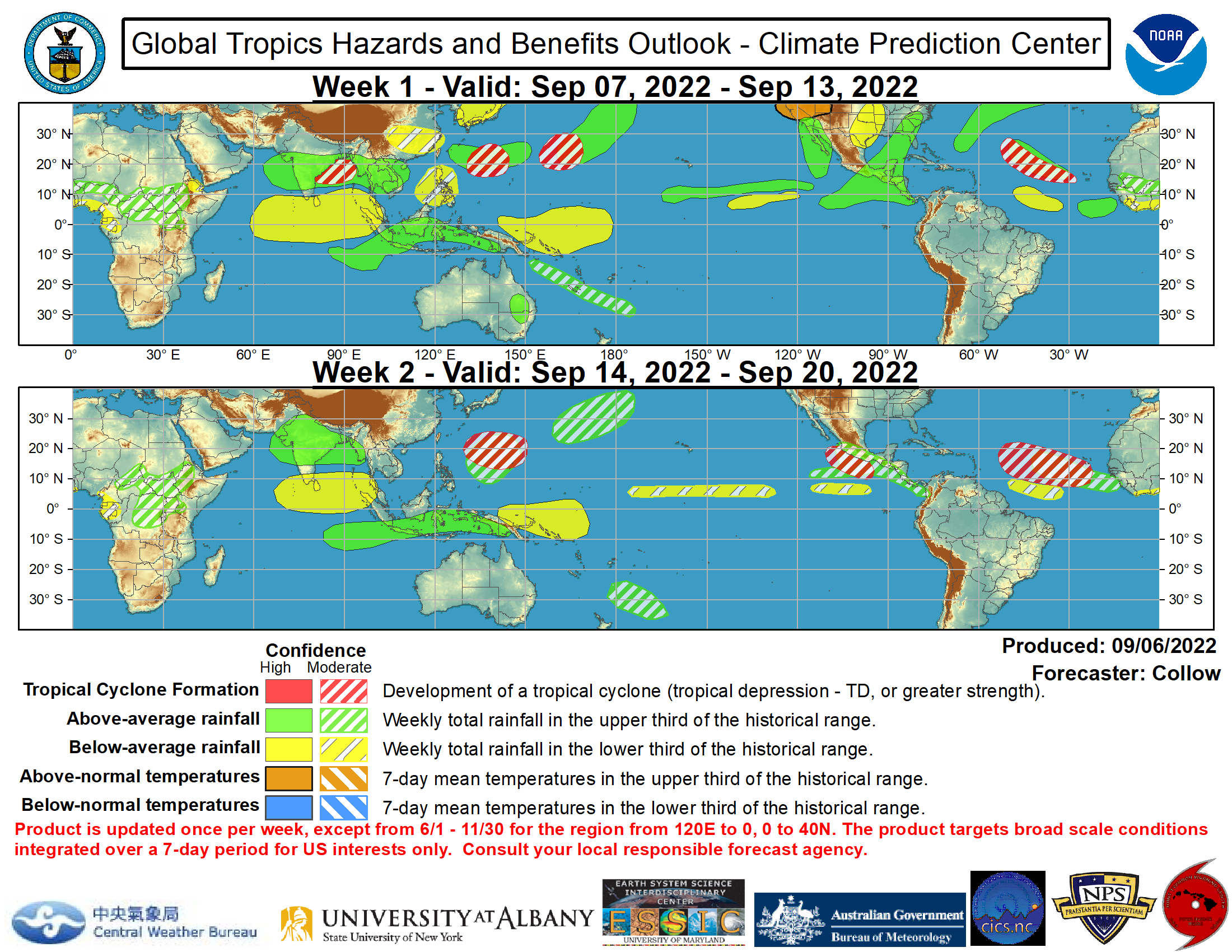
Visual Consistency Testing.
It is useful to see how the full-month forecast fits with the set of partial-month forecasts that we have. These will continue to update in this article. It is important to remember that with the partial-month forecasts, we generally have about 25 days of the subsequent month to look at when we do this at the end of the month as we are doing now. It depends on what day of the week the month ends. So this month, which ended on a Saturday, we have short-term forecasts that cover 27 of the 31 days in August so we are in better shape than usual to see if the whole is equal to the sum of the parts.
First Temperature
And Precipitation
Sometimes it is useful to compare the three-month outlook to the forecast for the first of the three months. It shows how much the pattern changes over the three-month period.

One can mentally subtract the First-Month Outlook from the Three-month Outlook and create the Outlook for the last two months in the three-month period.
And with respect to drought, this was also issued on June 30, 2021
Latest Monthly Assessment – July brought heavy monsoonal range to the Four Corners States and adjacent areas, putting a dent in the protracted drought that has gripped the region. Tucson, Arizona received over 8 inches of rain for the month, setting a record for their wettest calendar month (topping 7.93 inches in August 1955). Roswell, New Mexico recorded over 7.7 inches of rain over June and July, compared to a normal 8-month total (January – July) of just over 6 inches. However, long-term dryness continued to impact most areas, with near-record or record low levels reported on Lakes Powell and Meade, as well as the Great Salt Lake. Farther east, surplus rains washed out most of the drought in the Great Lakes Region. Significant rains have been more scattered across the Dakotas, the middle Mississippi Valley, the Great Lakes, the Northeast, and the upper Southeast. Improvements were noted in many of these areas, but drought continues to grip at least parts of these regions, especially across the Dakotas. Scattered heavy rains also reduced drought coverage in Puerto Rico, although significant rainfall deficits persisted along much of the south-central coast. In contrast, drought persisted or intensified across the northwest quarter of the country, the Far West, the central Plains, and the upper Mississippi Valley. Broad parts of the Hawaiian Islands and a swath across central and east-central Alaska also experienced subnormal precipitation, resulting in new or persisting drought there. Looking through August, enhanced chances for continued heavy monsoonal rainfall – especially during the last half of the month – should bring some additional improvement to the southern Rockies, though there is uncertainty about how far north substantial drought-easing rainfall will extend. The rest of the West and the northern half of the Plains should see drought persist or worsen, with some expansion into the central Plains. Farther east, expected near to above-normal rainfall should squelch lingering drought in eastern Parts of the Great Lakes region and the upper Southeast while remaining drought in upper New England is forecast to persist, although with low confidence given forecast uncertainty there. The remaining drought in southern Puerto Rico is expected to ease, as is the short-lived drought in central to east-central Alaska. But subnormal rainfall is again expected across Hawaii, allowing for drought to continue, expanding into areas where some degree of moisture shortages already exist.
Has the Drought Forecast changed?
| June 17th Seasonal Outlook | June 30th Single Month of July Outlook |
 |  |
Is there “persistence” in the forecast?
Looking back on July 2021 to relate the forecast for August to the actuals in July.
First July 2021 Temperature (30 out of 31 days).
And then July Precipitation (30 out of 31 days).
We then show the new forecast and the prior month’s actuals (less one day) side by side.
| Prior Month (usually missing one day) | Forecast for current Month | |
| Temperature | ||
| Precipitation |
Conclusion
The purpose of this article was to present the updated Outlook for August 2021 and compare it with the Early Outlook. It is not to critique the updated Outlook for August based on our opinions but we point out possible inconsistencies if we find them. We have assessed the extent to which the monthly outlook seems to fit with the other forecasts provided by NOAA. In reality, all forecasts are obsolete when issued as the situation changes day by day or six hours by six hours i.e. each new model run. In our other articles, we continually examine the current forecasts from NOAA including Day 1- 5, 6-10, 8-14, and Week 3 and 4. So we are continually looking at approximately 25 days into the future.
On August 12, 2021, IRI/CBC will issue their ENSO forecast and we will present that and critique it. We do not expect any major surprises with the NOAA August 12, 2021 Report. But the probability, timing and intensity of a possible Fall and Winter La Nina has been changing but as those seasons come closer, one expects the forecasts to become more reliable.
It is an ongoing process and we attempt to provide our readers with the best current assessment of the next approximately 25 days (except when we cover the Four-Season Analysis or medium-frequency cycles such as ENSO in which cases we are looking farther out than 25 days), so our analysis is pretty much ongoing. We also publish a “LIVE” Weather Article which updates in real-time to reflect NOAA Weather Headlines and for those interested provides detailed information down to current warnings in place. All of our reports including past versions of these reports can be located via the Directory/Archive which can be accessed here.



